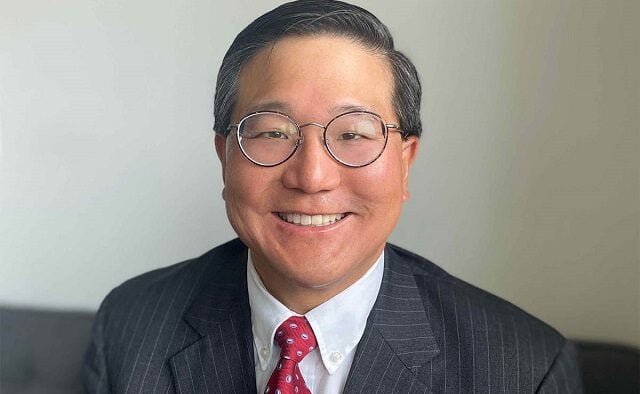Henry S. Kim is ready to reinvigorate Emory’s Michael C. Carlos Museum
 Henry S. Kim. Photo provided to Decaturish by Emory University
Henry S. Kim. Photo provided to Decaturish by Emory University
By Kendall Glynn, contributor
Atlanta, GA — Last month, Henry S. Kim began his stint as Museum Director of the Michael C. Carlos Museum and Associate Provost at Emory University. He wants to revitalize the museum through a focus on cultural connection and fostering conversations on important current issues.
Emory’s historical, artistic and archaeological collections have been housed on its main campus since 1919, making the Michael C. Carlos Museum (renamed in 1985) over 100 years old.
Kim is no stranger to energizing an institution with academic connections and a long history. Kim served in leadership at the Ashmolean Museum at Oxford University for 17 years.
The Ashmolean, founded in 1683, is one of the oldest museums in the Western world. With a vast collection housed in one of the most prestigious academic institutions on earth, Kim had a difficult project ahead of him. How do you keep a 300-year-old museum relevant?
“It’s actually possible to change even the oldest museum if the will is there,” said Kim.
Kim utilized the expert faculty of Oxford to inject new ideas and life into the Ashmolean collection.
“Instead of it being about individual civilizations, we made it about cultural connections between the many cultures of the world,” said Kim.
According to Kim, shining a spotlight on cultural connections is paramount to relevancy for a modern museum, but staying up-to-date and relevant is a fairly new worry for museums.
“Museums of the 80s and 90s didn’t have to worry about relevance. They just had treasures,” said Kim. “They were just worried about beauty. It was an aesthetic experience.”
Kim is moving the Carlos museum beyond such an approach. He wants to make the experience modern, interactive, challenging and current. He said that looking at important current issues is part of today’s museums’ job.
“It’s very important for museums to listen,” said Kim. “They have to not only understand what’s happening today, but what are some of the deep-rooted issues that may bubble up five years down the road.”
Kim’s stint as founding director of the Aga Khan Museum in Toronto was instrumental in teaching him this lesson.
After the Syrian refugee crisis, Kim and his colleagues at the Aga Khan saw an opportunity to proactively educate the public on the culture and history of Syria. According to Kim, they were motivated by trying to showcase the cultural similarities between Syrian refugees and immigrants and their Canadian counterparts.
They created “Syria: A Living History,” an exhibition of the history, artistry, and culture of Syria.
Later, they tackled the broader question of immigration by examining ideas of identity and artistry as artists moved between countries over time.
“People may ask why an art museum should care about immigration,” said Kim. “But many artists have immigration pasts. If you’re Ghanaian and you move to Toronto, how do you identify yourself? What identity do you take?”
It’s this proactive tackling of current issues along with illustrating the ties between different cultures that Kim sees as the way to keep a museum relevant. He views the Carlos Museum as a perfect place to accomplish this goal, and Atlanta as an ideal city for a museum like the Carlos.
“This campus is full of young, bright students, professors and faculty who are all very in tune with big issues,” said Kim. “We have great people who have worked here a long time. They know how to do things and they can make new ideas magical.”
According to Kim, a college campus is a perfect place to challenge people with new ideas and perspectives while gaining important feedback.
“Exhibitions in the past gave you facts, but now museums need to be motivated by questions,” said Kim.
Kim believes that Carlos is already positioned to reflect the many cultures represented in Atlanta.
“Atlanta is a magnet to so much immigration, and so many people come from all over the world. The Carlos can represent their past and culture and be one of the only institutions that do,” said Kim. “The museum collection today represents many people and cultures that are underrepresented by institutions today. That’s something we have to build upon.”
The Carlos Museum’s most recent exhibition is “Making an Impression: The Art and Craft of Ancient Engraved Gemstones.” The exhibit features ancient gemstones and speaks to the intimacy and personal nature of such treasures. It’s running until Nov. 27th. For more information, click here.
If you appreciate our work, please become a paying supporter. For as little as $6 a month, you can help us keep you in the loop about your community. To become a supporter, click here.
Want Decaturish delivered to your inbox every day? Sign up for our free newsletter by clicking here.
